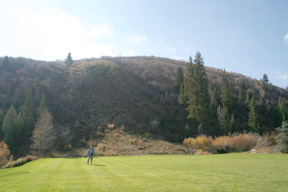
Engen Brothers Mural
Utah's skiing history is full of pioneers who brought skiing from a pastime for a few miners to a sport enjoyed by millions today. But no others stand out more than Alf Engen and his two brothers Sverre and Corey.
The Engen brothers came to Utah in the 1930's to compete in ski-jump competitions sponsored by the Utah Ski Club and other ski promoters. Many record-setting jumps at Ecker Hill and other locations turned the world's eye to Utah as a premier location for skiing.
The vision of these men enabled them to literally use materials from the declining mining industry, which had been the staple of Utah's economy for so many years, to build ski jumps and other ski equipment that would help launch Utah's future economy.
Alf, Sverre and Corey had the vision which motivated them to work hard to remove obstacles in order to take advantage of the snow that the clouds of opportunity would most certainly bring in the future. Our legislators of today have the same responsibilities as these earlier pioneers.
The Engen brothers were also instrumental in changing skiing from a spectator sport to a sport that could be enjoyed by all. Through Alf's efforts with the Forest Service Alta Ski Resort and many other resorts in Utah and Idaho provide many with a place to enjoy skiing. Alf's love for the sport and for the youth resulted in the Deseret Ski School which introduced skiing to thounsands of kids, kids who would represent the future opportunities that would come to Utah including the 2002 Winter Olympic Games.
This mural symbolizes the facts and ideals of these great men with the intent to inspire each of us to reach for the same qualities. These qualities will enable us to be prepared for the great oppornities that are certain to come.

A visit to Ecker Hill helped to inspire the concept for this mural.
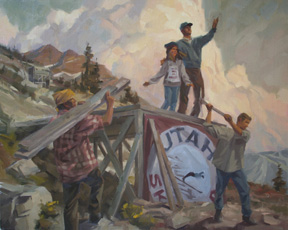
This is the concept sketch that was presented to the Art Selection Committee.
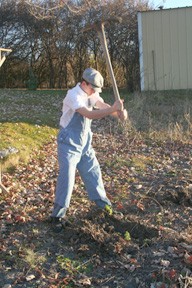
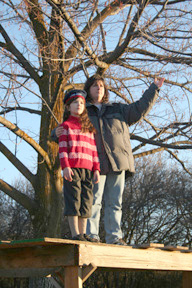
Once the sketch was approved, models were photographed in correct costume and position.
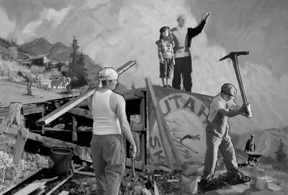
The photos were then assembled into a detailed compostition.
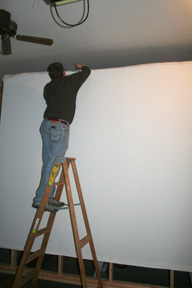
Custom easels were constructed and the canvas was stretched over them.
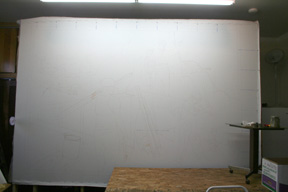
The sketch was then drawn onto the canvas.
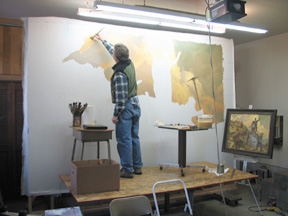
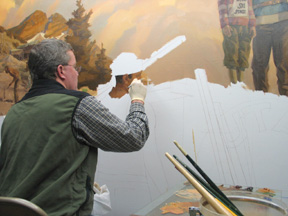

The painting process took about 2 months.
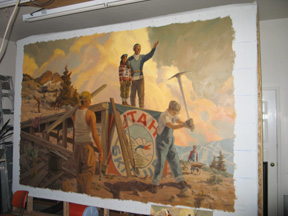
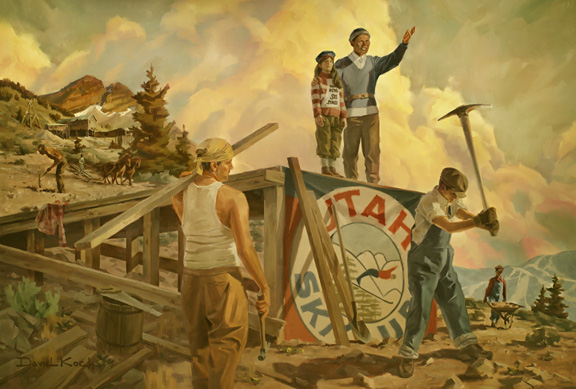
Finished mural.
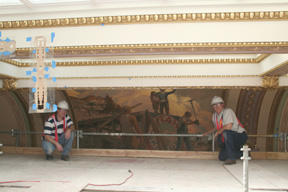
The mural was then taken to the Capitol Building and installed.
A final coat of varnish was applied and allowed to dry.